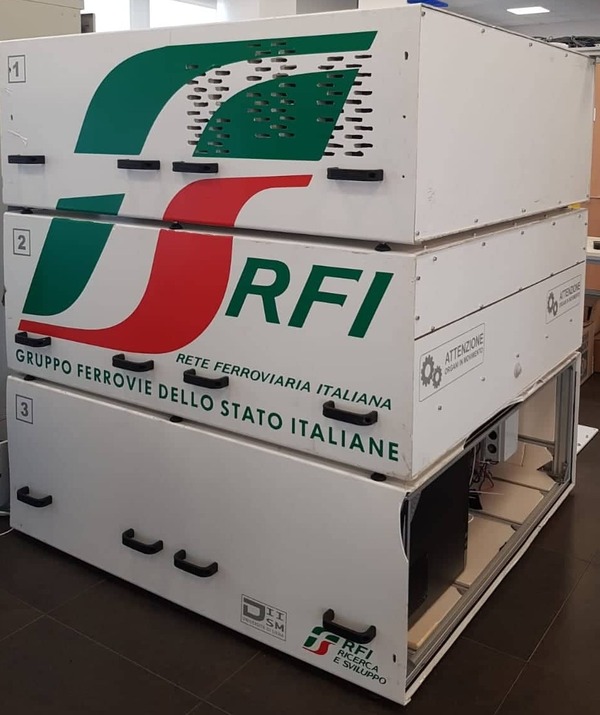Presentation of the mobile airport for flying drones
The drone box, designed together with the University of Siena, will safeguard the safety of the Italian railway network. The patent belongs to the Ferrovie dello Stato Italiane Group

Within the framework of the workshop “Solutions for the Security of Italy’s Infrastructure: automatic flight with unmanned vehicles. Possible synergies between public and private”, the Drone Box was recently presented, being a mobile and fully-automated airport for flying drones. Unique in Europe, the Drone Box is the result of the collaboration between the University of Siena’s Department of Information Engineering and Mathematical Sciences and Rete Ferroviaria Italiana.
The objective is to guarantee the safety of susceptible areas of the Italian railway network, on which the powering of the lines depends or which are at risk of terrorism, as well as controlling the accesses to remote areas scattered throughout the country.
The Drone Box responds to a specific operational need identified by the Central Department of Corporate Protection of the FS Italiane Group. From this commission, a synergy arose between the Department of Information Engineering of the University of Siena, represented by VISLAb (VIsion and Smart sensors Laboratory), under the supervision of Professor Alessandro Mecocci, and LEEME (Laboratorio di Elettronica, Elettrotecnica e Misure Elettroniche), guided by Professor Valerio Vignoli and Rete Ferroviaria Italiana - Research and Development.
During the presentation, a demonstration of machinery’s operation was carried out. It can even be controlled remotely, for example from the RFI Security Situations Room in Rome. Indeed, the Drone Box can operate in complete autonomy for a few months without any human garrison completing inspection missions, by recording each undertaking and sending the video to the control room, generating automatic alarms and triggering specific flights to verify who or what triggered the event. Being mobile, the Drone Box can be moved from one place to another and reprogrammed—also remotely—to perform the automated checks of each new area.
This project demonstrates the ability of university research to contribute to Italy’s innovation whereby it is in synergy with stakeholders such as RFI.